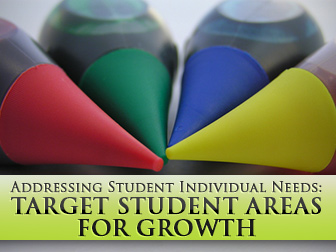It probably hits an ESL teacher several weeks into a semester: ESL students are diverse.
This probably seems so much a truism as to be laughable, but we sometimes forget it: even a relatively “homogeneous” class of ESL students of similar culture and level can have very different learning needs and goals. For example, some may be there for academic needs, others vocational; some may want to improve speaking skills, others writing; some may work better in groups and others individually. With all of this diversity, how does a teacher begin to pinpoint individual needs and meet them within the confines of one course? There are fortunately several general methods an instructor can call upon.

Methods to Meet Individual Student Growth Needs
-
1
Assess
Do both skills and needs assessment. Spend the first couple of days in the course assessing student language skills (speaking, listening, reading, and writing) through dictations, recorded dialogues, and short readings with written responses. Keep copies of the diagnostics to refer back to over the course of the term, to track individual student progress and remind yourself of students’ needs and goals. Assess frequently throughout the term, both informally through observation and notes and more formally through quizzes, tests, and written responses to topics, again to note individual progress.
In addition to assessing language skill, also assess student need. Give out a short checklist to students for them to mark the most important skills for them to improve and for what purpose: reading and writing skills for academic purposes? Speaking and listening for improved conversation? Increased technical/academic vocabulary in the workplace? Often within a class there is a particular “demographic”—most of the students will be there for academic reading and writing, for example, or they will mostly be there for oral skills and vocational purposes.
-
2
Variety
Again, students will often be at a shared level with a shared purpose for coming to class. But there are always those “outliers,” that group whose needs are different. They may make up ten to twenty percent of the class, actually, so of course they should not be ignored. One good way to address divergent student need is variety: vary materials and instruction. Include both academic and nonacademic texts to read, for example. Include both literacy and oral skills instruction within a class period. In addition, vary groupings: use whole group, small group, pair, and individual activities. In this way, individual learner need is met while at the same time students are exposed to a variety of skills and learner preferences. In this way, the instructor can meet individual learner needs and preferences while challenging students to grow.
-
3
Observe students in action
Who is unfailingly social? Who stays at his desk? What do students talk about during break? Do they talk about the news, sports, their families, their jobs? Informal observations like these are likely to reveal a lot about learner needs and preferences. The class where students mostly stay at their desks and talk at break, if at all, about the classes they are taking this term is very different from the class where students get up and mingle at break, discussing sports and their jobs. They will therefore have different needs and interests in learning.
-
4
Pay attention to actual student production. Consider a portfolio system.
Often students are unaware of their true strengths as a language learner, and a teacher, or even a native speaker, has more insight. For example, I typically assess my own speaking skills in Russian and French as abysmal, my writing skills as stronger. However, my teachers and native speakers alike tell me differently—that actually my speaking skills are not at all bad while my writing lapses into incoherence at times. Such observations can lead to discussions with students in individual conferences about areas for growth to work on. In addition, portfolios, a representative collection of individual student work over the course of the term, are likely to reveal interesting patterns that may not be apparent on an assignment-by-assignment basis: with a portfolio system, for example, I’m more likely to see the repeated concerns a specific student has with word choice that I might just dismiss as inconsequential in a single assignment.
-
5
Conferences with students
Follow up on needs assessments with a face-to-face conference with each student if possible. Students sometimes don’t really know what to put on a written needs assessment, or end up checking every box as every skill seems important to them, but a face-to-face and informal conference often reveal more information than a simple written survey or quiz will. Therefore, try to conference with students at least twice a semester for even a few minutes at your desk to discuss goals and progress within the class. Conferences can reveal students’ real priorities with careful questioning about what students hope to get out of the class, what their future plans are, what their past experiences with language learning has been. Knowing where students have been and where they hope to go can help in tailoring curriculum and instruction.
Meeting individual student need can be a challenge, particularly in a large, multilevel class because in such a class there is so much diverse need, and even the ESL class which on the surface seems homogeneous in level and demographics students often come from a variety of backgrounds and have very different goals. However, through a number of carefully planned steps, such as needs and skills assessment at the beginning of the term, as well as ongoing planning and assessment, informal and formal, the instructor can meet the needs of all of her students.
What are your methods for meeting individual student need?
P.S. If you enjoyed this article, please help spread it by clicking one of those sharing buttons below. And if you are interested in more, you should follow our Facebook page where we share more about creative, non-boring ways to teach English.







